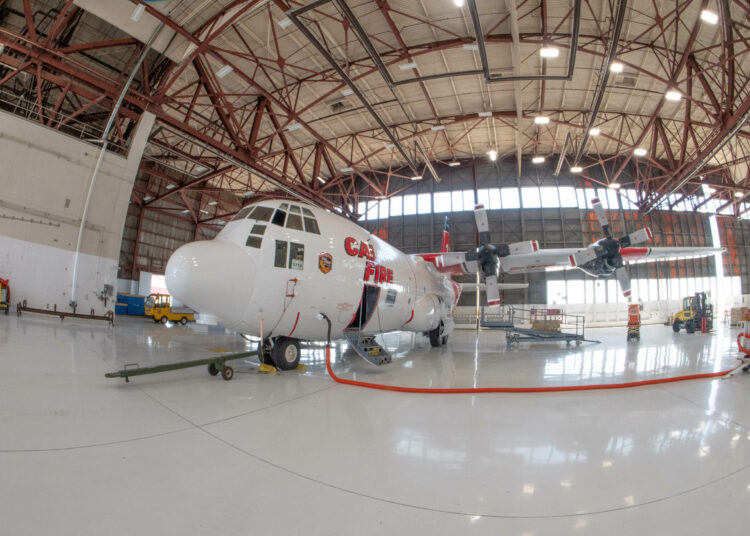The long-awaited introduction of the C-130 into the CAL FIRE fleet is one step closer today after the final congressional approval to transfer the seven aircraft through the National Defense Authorization Act for fiscal year 2024 from DOD control to CAL FIRE.
The seven aircraft, although already painted in CAL FIRE liveries, have been stuck in legislative limbo for almost five years since they arrived at CAL FIRE headquarters in Sacramento, preventing their deployment into the field, which final approval for transfer was granted in the current bill approved on Thursday.
The California Department of Forestry in a press release on August 9th, 2023, stated:
In recent weeks, the U.S. Senate and U.S. House of Representatives have taken action on a critical issue of importance for California: authorizing the expedited transfer of seven C-130 aircraft from the United States Coast Guard to CAL FIRE for wildfire suppression, search and rescue, and emergency operations related to wildfires.
In a showing of bipartisan support led by U.S. Senator Alex Padilla (D-CA) and Congressman Ken Calvert (CA-41), legislation has been introduced to support an effort that builds on the foundation laid by U.S. Senator Dianne Feinstein (D-CA) in 2018. This initiative has also benefited from the consistent and critical partnership of California Governor Gavin Newsom and CAL FIRE Chief Joe Tyler, who have been instrumental in moving the effort over the finish line. From a retardant delivery perspective, a single C-130 is equivalent to six S-2T Airtankers currently in use by CAL FIRE.
In service for more than 60 years, the C-130 is a workhorse of military aircraft, used for troop transportation, medical evacuation, search and rescue, weather reconnaissance and many other functions. Similar C-130s are already in use and have demonstrated their superior capability to drop 3,000 gallons (weighing 28,000 pounds) in less than five seconds.
“This transfer of critical aircraft to the State of California will surely save lives, improve air quality, protect forestlands, and reduce carbon emissions,” said Matt Dias, President and CEO of Calforests.
“Adding seven C-130s to California’s aerial firefighting force is a truly remarkable advancement. We must continue to prioritize forest management and wildfire prevention, but vigorous and efficient suppression forces are needed in trying times as well. The force multiplier offered by the addition of these airframes to fire suppression forces is critical. Today is a huge step in that direction.” “The addition of the C-130s will undoubtedly enhance the states aerial firefighting capabilities,” said Joe Tyler, Director and Fire Chief of CAL FIRE. According to Chief Tyler, “These critical assets will aid in reducing the loss of life and property while protecting our natural resources and private timberlands. I look forward to these aircraft joining CAL FIRE’s world-renowned aerial firefighting force.”
"Between earthquakes, wildfires and other natural disasters, California is one of the most costly and challenging states for property insurers and owners. While we may not be able to prevent earthquakes, we do have the tools to combat the most destructive wildfires. Transferring these C-130s from the Coast Guard to CAL FIRE is a huge step forward in the state's ever-vigilant battle against these fires," said Rex Frazier, President of Personal Insurance Federation of California.
The final step in addition to pilot and crew training, which has already been underway, is the installation of Coulson-manufactured RADS tanks for the aircraft which will make them capable of being able to disperse up to 3000 gallons of retardant or water on wildfires.






